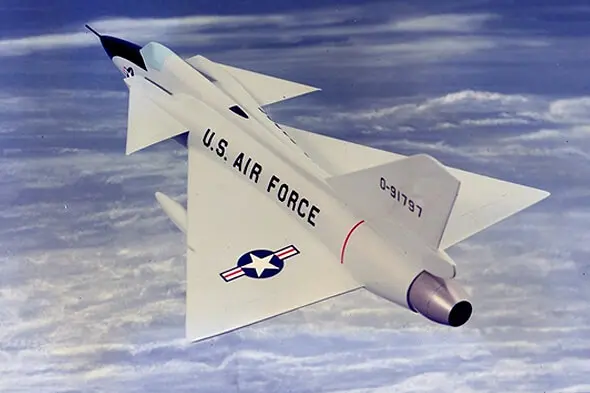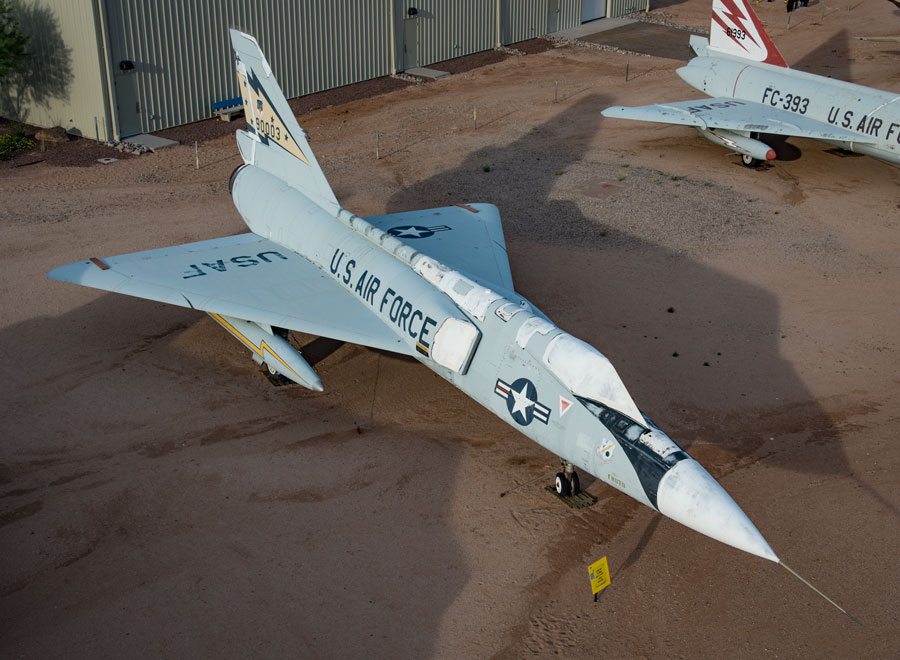Unveiling the F-106 Delta Dagger: The Ultimate Interceptor Against Russian Nuclear Bombers
The F-106 Delta Dart: America’s Ultimate Interceptor
In the annals of aviation history, few aircraft have garnered as much acclaim and respect as Convair’s F-106 Delta Dart, which entered service with the United States Air Force in 1959. Revered as the pinnacle of all-weather interceptor aircraft, the F-106 earned the endearing nickname “The Ultimate Interceptor.”
F-106 Delta Dart: A Historical Perspective
Amid the tensions of the Cold War, the United States faced a formidable challenge in countering the Soviet Union’s long-range strategic bomber fleet. One particular cause for concern was the Soviet Tupolev Tu-4, essentially a reverse-engineered copy of the B-29 Superfortress, which had the potential to extend the reach of Soviet bombing campaigns significantly. To address this threat, the Air Force required a high-speed interceptor capable of engaging Soviet bomber formations day or night, in any weather condition – and the Delta Dart emerged as the solution they had been seeking.
The F-106 Delta Dart’s airframe represented a significant upgrade over its predecessor, the F-102A interceptor. Although there were some visual similarities between the two aircraft, the Delta Dart was essentially a new and vastly superior platform.
Built around a delta-type wing, the F-106 lacked both a gun and the capacity to carry bombs, aligning it with its role as an interceptor. Instead, it carried four air-to-air missiles and a single air-to-air, nuclear-tipped rocket, all housed internally to maintain its sleek aerodynamic profile and minimize in-flight drag. In 1959, two Delta Darts set world speed records, first approaching Mach 2 and later breaking that barrier.
One of the most memorable incidents involving the F-106 occurred during a 1970 training flight when a Delta Dart entered an unrecoverable spin. The pilot ejected, inadvertently causing aerodynamic changes that led to the aircraft’s recovery. It gently descended into a nearby farmer’s field, cushioned by light snow cover and soft soil, earning it the moniker “The Cornfield Bomber.”
While the F-106 was considered for combat roles during the Vietnam War, it never saw action in that conflict and was never sold to foreign nations. As an interceptor, the Air Force stationed the Delta Dart in regions where Soviet bomber fleets posed a threat, including parts of the United States, Iceland, Alaska, and briefly in South Korea and Germany. Over its nearly 30-year service life, the F-106 underwent several upgrades, including the addition of a 20mm rotary cannon and an improved canopy for enhanced pilot visibility. After its retirement in the late 1980s, the F-106 briefly found a new purpose as a NASA research aircraft but was ultimately retired for good in the late 1990s. The F-106 Delta Dart will always be remembered as an iconic symbol of American aerospace excellence during the Cold War era.
Hits: 13
![Updated] Former F-106 pilot explains why the Delta Dart - although fast and agile - was never used in Vietnam - The Aviation Geek Club](https://theaviationgeekclub.com/wp-content/uploads/2021/12/F-106-Vietnam.jpg)








